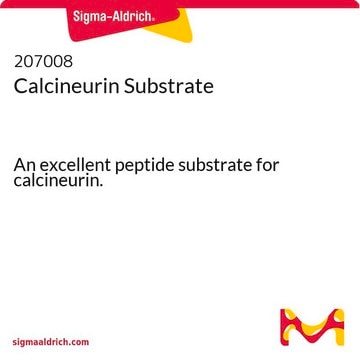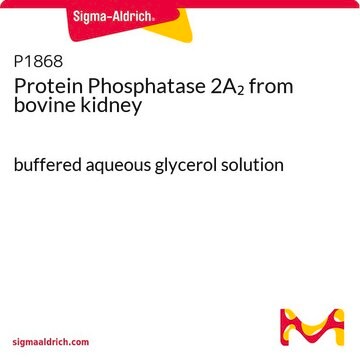C1907
Calcineurin from bovine brain
lyophilized powder, ≥2,500 units/mg protein
Synonym(s):
Calcium/Calmodulin-Activated Protein Phosphatase, Calmodulin binding protein, Modulator binding protein, PP2B, Phosphoprotein Phosphohydrolase, Protein phosphatase 2B
About This Item
Recommended Products
biological source
bovine
Quality Level
form
lyophilized powder
specific activity
≥2,500 units/mg protein
mol wt
dimer ~77 kDa
subunit mol wt 19-58 kDa
composition
Protein, 0.3-1.7% Lowry
solubility
H2O: soluble
UniProt accession no.
storage temp.
−20°C
Gene Information
cow ... PPP3CA(286852)
Looking for similar products? Visit Product Comparison Guide
General description
Application
- as a positive control in western blot analysis of oocytes and cumulus cells proteome
- as a positive control in calmodulin (CaM)-agarose binding assay
- to test its phosphatase activity in the presence of okadaic acid
Biochem/physiol Actions
Unit Definition
Physical form
Analysis Note
Storage Class Code
11 - Combustible Solids
WGK
WGK 2
Flash Point(F)
Not applicable
Flash Point(C)
Not applicable
Personal Protective Equipment
Certificates of Analysis (COA)
Search for Certificates of Analysis (COA) by entering the products Lot/Batch Number. Lot and Batch Numbers can be found on a product’s label following the words ‘Lot’ or ‘Batch’.
Already Own This Product?
Find documentation for the products that you have recently purchased in the Document Library.
Our team of scientists has experience in all areas of research including Life Science, Material Science, Chemical Synthesis, Chromatography, Analytical and many others.
Contact Technical Service







